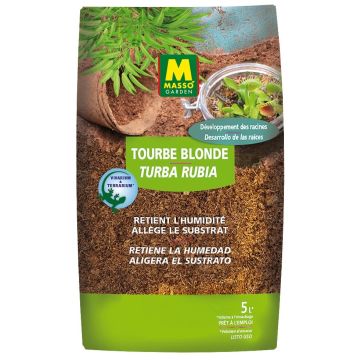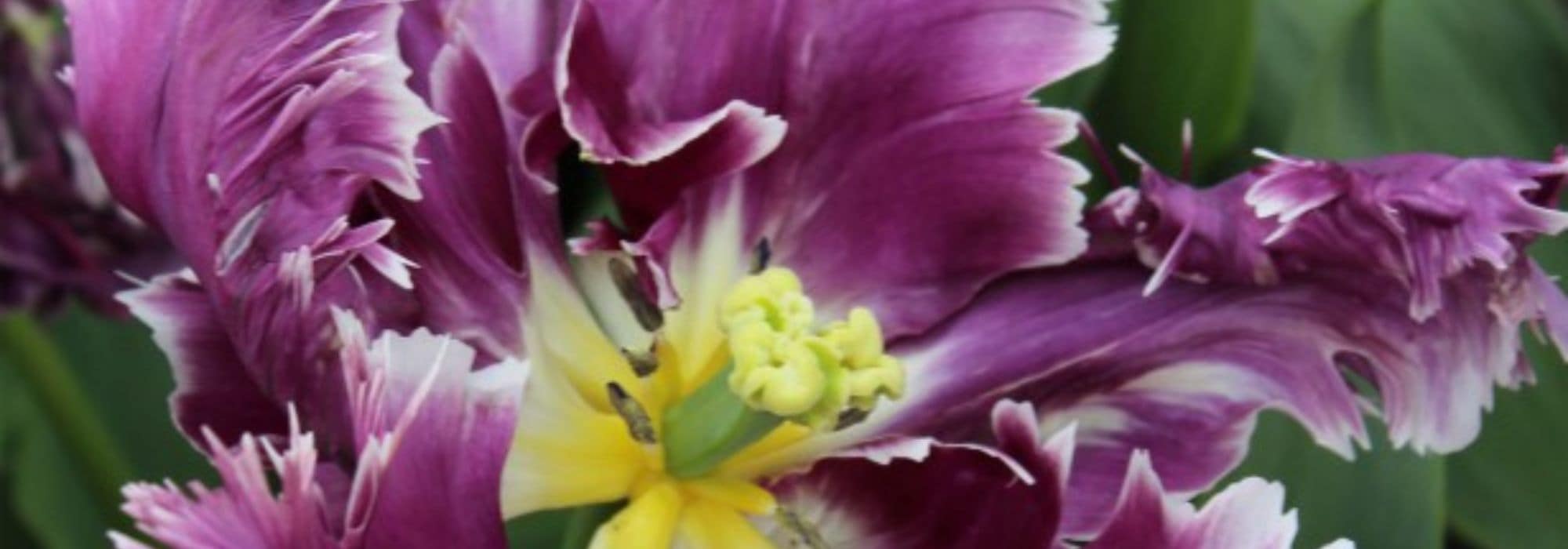

Tulipa kaufmanniana Shakespeare
Tulipa kaufmanniana Shakespeare
Tulipa kaufmanniana Shakespeare
Waterlily tulip
Special offer!
Receive a €20 voucher for any order over €90 (excluding delivery costs, credit notes, and plastic-free options)!
1- Add your favorite plants to your cart.
2- Once you have reached €90, confirm your order (you can even choose the delivery date!).
3- As soon as your order is shipped, you will receive an email containing your voucher code, valid for 3 months (90 days).
Your voucher is unique and can only be used once, for any order with a minimum value of €20, excluding delivery costs.
Can be combined with other current offers, non-divisible and non-refundable.
This plant carries a 6 months recovery warranty
More information
We guarantee the quality of our plants for a full growing cycle, and will replace at our expense any plant that fails to recover under normal climatic and planting conditions.
Does this plant fit my garden?
Set up your Plantfit profile →
Description
The Tulipa kaufmanniana 'Shakespeare' is a horticultural variety belonging to the Kaufmann Tulip group, also known as the water lily tulip, due to the shape its corolla takes when it unfolds. In early spring, it produces red flowers through which the sun likes to play, creating delightful transparencies. In the centre of the corolla, a bright yellow heart contrasts with the red petals. Unlike other varieties in this group, the foliage is uniformly green and perfectly complements the flower's color. This hardy bulbous plant easily naturalises in the garden and faithfully blooms year after year.
Originally from the mountains of Central Asia, the Tulipa kaufmanniana or Kaufmann Tulip spreads in large carpets on the dry and rocky meadows of its native Turkestan. This species is the origin of numerous cultivars and hybrids with vibrant colours, including the 'Shakespeare' variety. Its bulb is round, covered with a brown tunic, and measures about 3 cm (1in) in diameter. In spring, the plant forms a small clump composed of 2 to 5 lanceolate leaves, wide, 10 to 25 cm (4 to 10in) long, with a slightly glaucous green colour. It produces a short floral stem only 15 cm (6in) tall starting from February, with flowering blooming in March or even April. The flower measures 5 to 8 cm (2 to 3in) in diameter, consisting of 6 tepals (similar petal and sepal) with an oval shape and rounded tip. The tepals bear a discreet central longitudinal stripe, which enhances their pattern. The corolla opens widely in the sun, almost flat, in a hexagonal star shape centred on a yellow heart, and at that moment resembles more a water lily than a tulip. At the end of the day, when the sun disappears on the horizon, the corolla closes again.
Kaufmann tulips are very hardy plants that easily naturalise in the garden under the right conditions. They prefer cold and humid winters and dry summers. You can plant them in pots to adorn your terrace or balcony, or create large colourful clusters in the garden, or even combine them with other plants in a rockery that they will brighten with the first spring sunshine. Pair Shakespeare with the Narcissus Barrett Browning, whose white flowers with an orange-yellow heart will allow you to create a joyful scene from the first beautiful days. To ensure a long flowering period, consider also planting later blooming plants, such as perennials with staggered flowering. With their colours spanning the entire imaginable palette and their sizes ranging from about fifteen centimetres to 1 metre (3 feet) in height, Irises will be perfect for this role. And to flower the end of the season, the prolific Aster will be an inexhaustible source of inspiration in white, pink, blue shades, and in all sizes.
Plant habit
Flowering
Foliage
Safety measures
Botanical data
Tulipa
kaufmanniana
Shakespeare
Liliaceae
Waterlily tulip
Cultivar or hybrid
ingestion
Cette plante est toxique si elle est ingérée volontairement ou involontairement.
Ne la plantez pas là où de jeunes enfants peuvent évoluer, et lavez-vous les mains après l'avoir manipulée.
Pensez à conserver l'étiquette de la plante, à la photographier ou à noter son nom, afin de faciliter le travail des professionnels de santé.
Davantage d'informations sur https://plantes-risque.info
Planting and care
Plant your tulips as soon as possible in a sufficiently well-drained soil. Loosen the soil deeply and incorporate coarse sand or gravel into the planting soil if necessary. Plant them at a depth of 8 cm (3in) (Bulbs should be covered with soil twice their height). Space the bulbs a few centimetres apart, making sure they don't touch. Choose a sunny location, at least until May, for better flowering. Kaufmann tulips go dormant in the summer in dry soil, even shaded by deciduous trees or bushes. After flowering, cut the flower stems and let the leaves dry completely before cutting them.
Tips for flowering carpets: You can create beautiful flower spaces around the house, in flowerbeds, around trees, or in wild spaces. It is an economical and sustainable solution, provided you follow a few principles:
1) It is a planting to be left in place.
2) Choose the varieties carefully according to the situation.
3) A period of rest is essential after flowering for the bulbs to regenerate. Let the foliage turn yellow and dry before cutting it.
4) Organic fertiliser should be spread once a year in autumn.
Planting period
Intended location
Care
Planting & care advice
This item has not been reviewed yet - be the first to leave a review about it.
Haven't found what you were looking for?
Hardiness is the lowest winter temperature a plant can endure without suffering serious damage or even dying. However, hardiness is affected by location (a sheltered area, such as a patio), protection (winter cover) and soil type (hardiness is improved by well-drained soil).

Photo Sharing Terms & Conditions
In order to encourage gardeners to interact and share their experiences, Promesse de fleurs offers various media enabling content to be uploaded onto its Site - in particular via the ‘Photo sharing’ module.
The User agrees to refrain from:
- Posting any content that is illegal, prejudicial, insulting, racist, inciteful to hatred, revisionist, contrary to public decency, that infringes on privacy or on the privacy rights of third parties, in particular the publicity rights of persons and goods, intellectual property rights, or the right to privacy.
- Submitting content on behalf of a third party;
- Impersonate the identity of a third party and/or publish any personal information about a third party;
In general, the User undertakes to refrain from any unethical behaviour.
All Content (in particular text, comments, files, images, photos, videos, creative works, etc.), which may be subject to property or intellectual property rights, image or other private rights, shall remain the property of the User, subject to the limited rights granted by the terms of the licence granted by Promesse de fleurs as stated below. Users are at liberty to publish or not to publish such Content on the Site, notably via the ‘Photo Sharing’ facility, and accept that this Content shall be made public and freely accessible, notably on the Internet.
Users further acknowledge, undertake to have ,and guarantee that they hold all necessary rights and permissions to publish such material on the Site, in particular with regard to the legislation in force pertaining to any privacy, property, intellectual property, image, or contractual rights, or rights of any other nature. By publishing such Content on the Site, Users acknowledge accepting full liability as publishers of the Content within the meaning of the law, and grant Promesse de fleurs, free of charge, an inclusive, worldwide licence for the said Content for the entire duration of its publication, including all reproduction, representation, up/downloading, displaying, performing, transmission, and storage rights.
Users also grant permission for their name to be linked to the Content and accept that this link may not always be made available.
By engaging in posting material, Users consent to their Content becoming automatically accessible on the Internet, in particular on other sites and/or blogs and/or web pages of the Promesse de fleurs site, including in particular social pages and the Promesse de fleurs catalogue.
Users may secure the removal of entrusted content free of charge by issuing a simple request via our contact form.
The flowering period indicated on our website applies to countries and regions located in USDA zone 8 (France, the United Kingdom, Ireland, the Netherlands, etc.)
It will vary according to where you live:
- In zones 9 to 10 (Italy, Spain, Greece, etc.), flowering will occur about 2 to 4 weeks earlier.
- In zones 6 to 7 (Germany, Poland, Slovenia, and lower mountainous regions), flowering will be delayed by 2 to 3 weeks.
- In zone 5 (Central Europe, Scandinavia), blooming will be delayed by 3 to 5 weeks.
In temperate climates, pruning of spring-flowering shrubs (forsythia, spireas, etc.) should be done just after flowering.
Pruning of summer-flowering shrubs (Indian Lilac, Perovskia, etc.) can be done in winter or spring.
In cold regions as well as with frost-sensitive plants, avoid pruning too early when severe frosts may still occur.
The planting period indicated on our website applies to countries and regions located in USDA zone 8 (France, United Kingdom, Ireland, Netherlands).
It will vary according to where you live:
- In Mediterranean zones (Marseille, Madrid, Milan, etc.), autumn and winter are the best planting periods.
- In continental zones (Strasbourg, Munich, Vienna, etc.), delay planting by 2 to 3 weeks in spring and bring it forward by 2 to 4 weeks in autumn.
- In mountainous regions (the Alps, Pyrenees, Carpathians, etc.), it is best to plant in late spring (May-June) or late summer (August-September).
The harvesting period indicated on our website applies to countries and regions in USDA zone 8 (France, England, Ireland, the Netherlands).
In colder areas (Scandinavia, Poland, Austria...) fruit and vegetable harvests are likely to be delayed by 3-4 weeks.
In warmer areas (Italy, Spain, Greece, etc.), harvesting will probably take place earlier, depending on weather conditions.
The sowing periods indicated on our website apply to countries and regions within USDA Zone 8 (France, UK, Ireland, Netherlands).
In colder areas (Scandinavia, Poland, Austria...), delay any outdoor sowing by 3-4 weeks, or sow under glass.
In warmer climes (Italy, Spain, Greece, etc.), bring outdoor sowing forward by a few weeks.









































